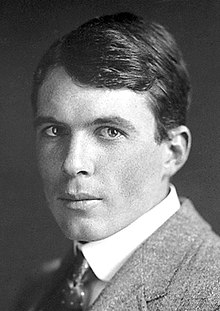
Back William Lawrence Bragg Afrikaans William Lawrence Bragg AN وليام لورنس براغ Arabic وليام لورنس براج ARZ Uilyam Lorens Breqq Azerbaijani ویلیام لورنس براق AZB Уільям Лорэнс Брэг Byelorussian Уилям Лорънс Браг Bulgarian উইলিয়াম লরেন্স ব্র্যাগ Bengali/Bangla Lawrence Bragg BS
Lawrence Bragg | |
|---|---|
 Bragg in 1915 | |
| Born | William Lawrence Bragg 31 March 1890 |
| Died | 1 July 1971 (aged 81) Waldringfield, Suffolk, England |
| Education | St Peter's College, Adelaide |
| Alma mater | University of Adelaide Trinity College, Cambridge |
| Known for | X-ray diffraction X-ray spectroscopy X-ray microscopy Bubble raft Bragg's law Bragg–Gray cavity theory Bragg–Williams approximation |
| Spouse |
Alice Hopkinson (m. 1921) |
| Parents |
|
| Relatives | Charles Todd (grandfather) |
| Awards |
|
| Scientific career | |
| Fields | Physics |
| Institutions | |
| Academic advisors | J. J. Thomson William Henry Bragg |
| Doctoral students | |
| Other notable students | William Cochran |
| 3rd Director of NPL | |
| In office 1937–1938 | |
| Preceded by | Frank Edward Smith (Acting) |
| Succeeded by | Charles Galton Darwin |

Sir William Lawrence Bragg (31 March 1890 – 1 July 1971) was an Australian-born British physicist and X-ray crystallographer, discoverer (1912) of Bragg's law of X-ray diffraction, which is basic for the determination of crystal structure. He was joint recipient (with his father, William Henry Bragg) of the Nobel Prize in Physics in 1915, "For their services in the analysis of crystal structure by means of X-rays";[4] an important step in the development of X-ray crystallography.[5]
Bragg was knighted in 1941.[4] As of 2024, he is the youngest ever Nobel laureate in physics, having received the award at the age of 25.[6] Bragg was the director of the Cavendish Laboratory, Cambridge, when the discovery of the structure of DNA was reported by James D. Watson and Francis Crick in February 1953.
- ^ Phillips, D. (1979). "William Lawrence Bragg. 31 March 1890 – 1 July 1971". Biographical Memoirs of Fellows of the Royal Society. 25: 74–143. doi:10.1098/rsbm.1979.0003. JSTOR 769842.
- ^ "Alexander Stokes". The Telegraph. 28 February 2003. Retrieved 16 January 2016.
- ^ "National Library of Wales: From Warfare to Welfare 1939–59". Archived from the original on 18 November 2015. Retrieved 17 November 2015.
- ^ a b "The Nobel Prize in Physics 1915". Nobel Foundation. Retrieved 26 April 2018.
- ^ Stoddart, Charlotte (1 March 2022). "Structural biology: How proteins got their close-up". Knowable Magazine. doi:10.1146/knowable-022822-1. Retrieved 25 March 2022.
- ^ "Facts on the Nobel Prize in Physics". Nobel Foundation. Retrieved 16 January 2016.